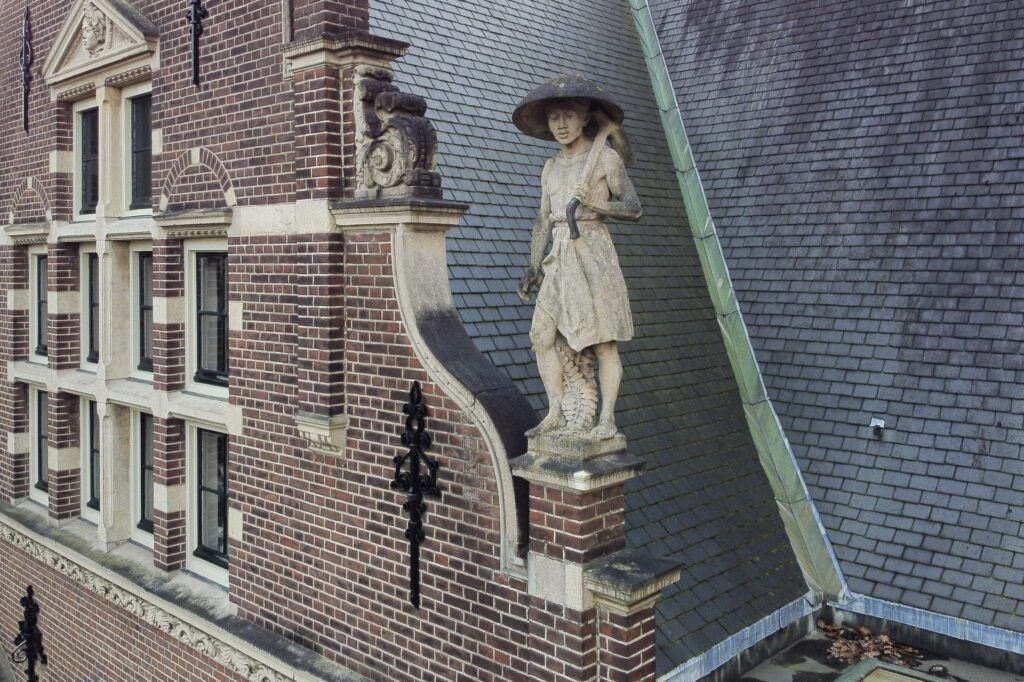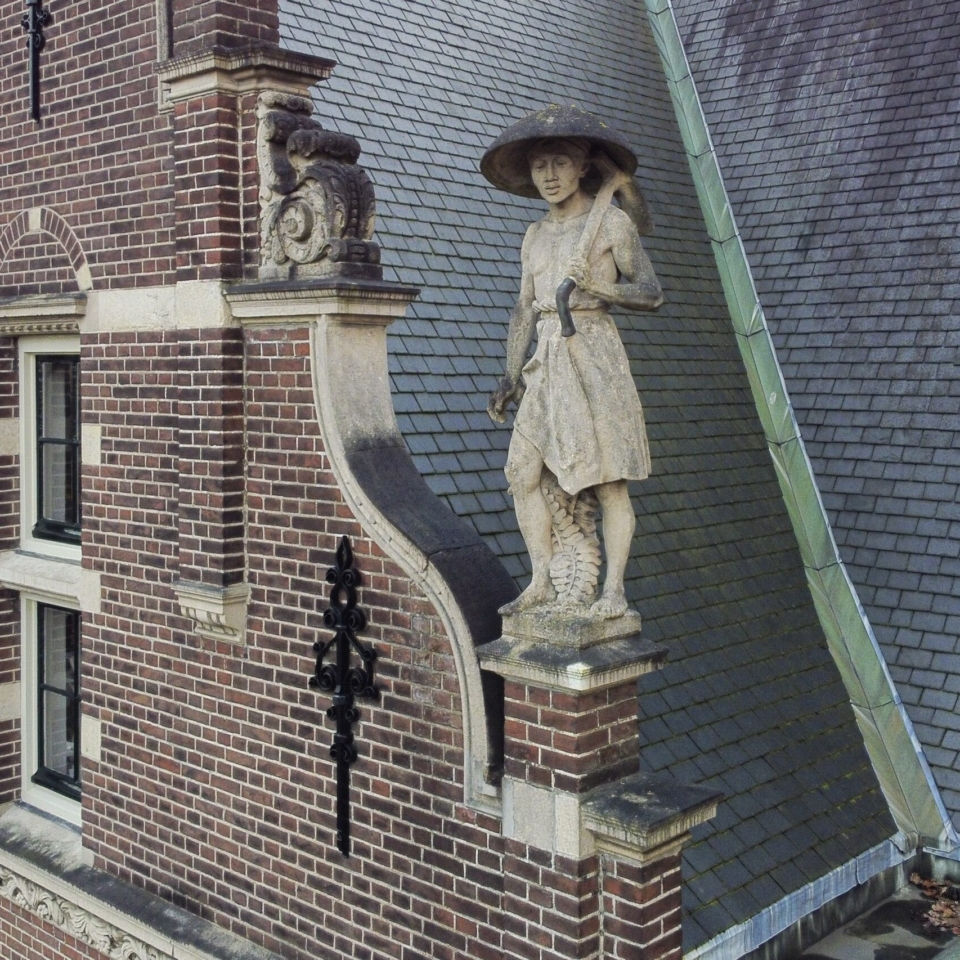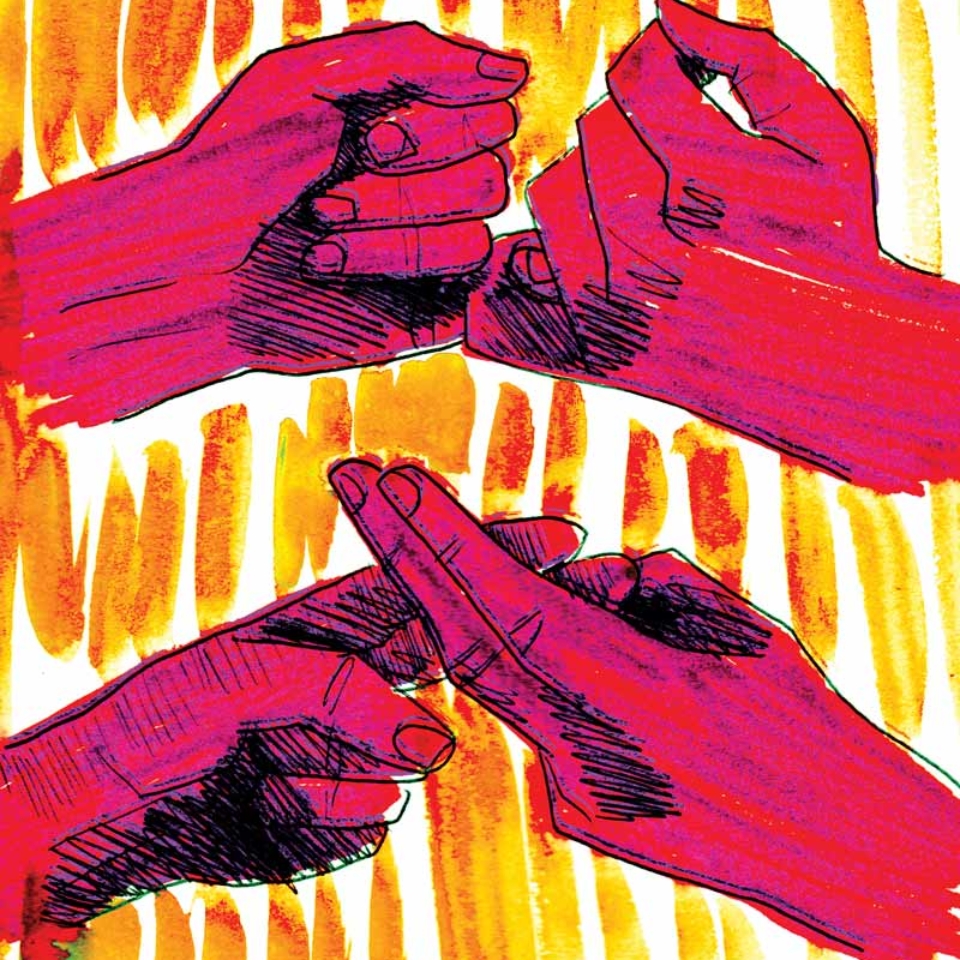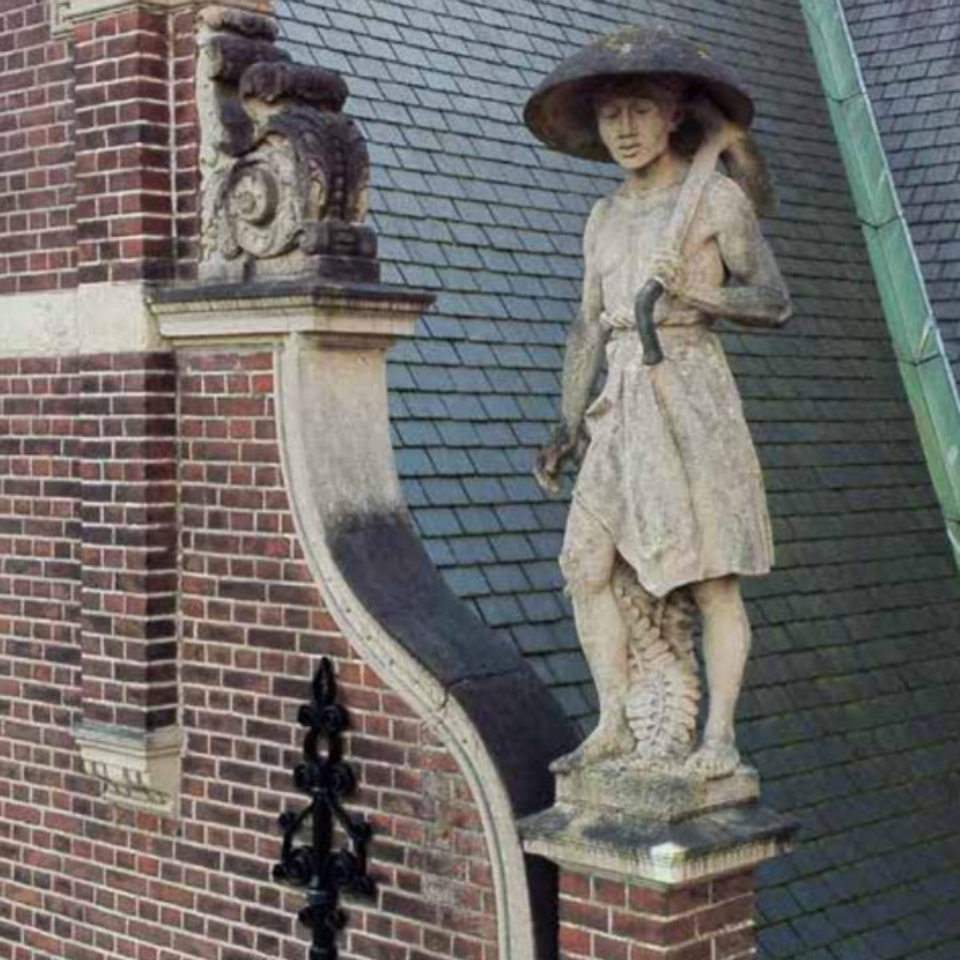This is the old entrance to the Afdeeling Culturele en Physische Antropologie (Cultural and Physical Anthropology Department), previously the Koloniaal Instituut’s Afdeeling Volkenkunde (Ethnography Department). The department was dedicated to ‘the current circumstances of peoples in the colonies and further dissemination of knowledge about this population’s households, habits and customs and their level of social development’.13
The facade features two sculptures of indigenous men, ‘The Javanese’ and ‘The Dayak’.
The man on the left, bearing a spear and shield, is a so-called Dayak warrior. His pose is typical of artistic and photographic depictions at the time. This warrior represents the people of Kalimantan (then known as Borneo), who were portrayed as ‘wild’, ‘barbaric’ and ‘bloodthirsty’, including in museums – this was partially due to the then ritual practice of taking their enemies’ heads in times of conflict. The Dutch civilising mission aimed to eliminate such ‘barbaric’ practices and improve local culture according to European standards.
The Javanese farmer on the right stands for indigenous agricultural traditions – which included advanced practices such as terrace farming. As with most of the building’s symbolic imagery, it is unlikely that the carvings were modelled on specific people. After all, representations of the inhabitants of the archipelago were only meant to symbolise specific populations and typical occupations. Names generally only mattered when the persons involved were Dutch, bolstering ideas of the nation’s ‘glorious’ past.
Above the door are a Balinese priest and a European scientist. The priest has a book in his lap and is explaining something to the scientist, who appears to be writing it down. They are crowned by a Javanese Kala head, which served as protection against evil. This is one of the few images in the building that seem to grant colonised and coloniser at least some equality and which expresses an apparent interest in local knowledge. More commonly, the focus is on European knowledge, with scarce attention to or respect for local knowledge systems.







